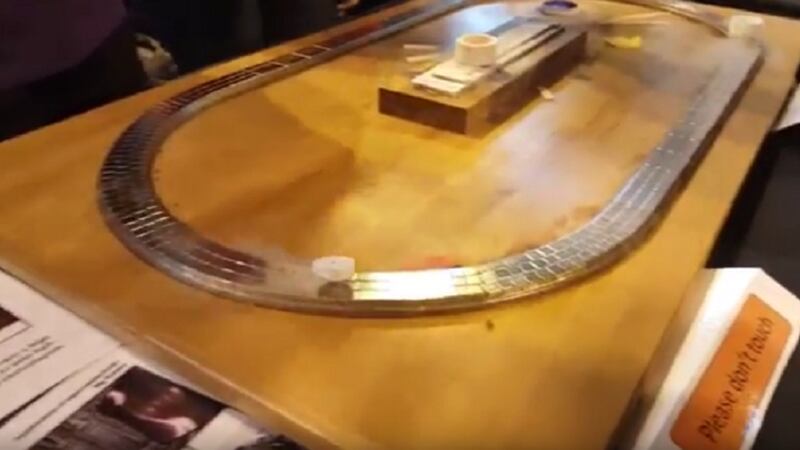This model train is way more exciting than anything you had as a kid, because if you look closely, it’s levitating just above the track.
The “train” is made out of a little chunk of black ceramic, similar to what makes up cups and saucers.
But when the ceramic is cooled with liquid nitrogen down to minus 196 degrees Celsius, something strange happens that scientists still don’t fully understand.
nullnull
As well as levitating, it whizzes around above the track without a power source.
But what gives this humble material such extraordinary properties, and how can we harness it to say, prevent train delays? The ceramic is a superconductor, Ally Caldecote, head of Physics outreach at Warwick university, told us at Birmingham’s Big Bang Science Fair.
“They’re special because when they cool down to what we call their super conducting temperature they exhibit these impressive properties,” she says.
For one, they have zero electrical resistance, which means if current passes through them, it’s not lost over time.
This technology is currently used in MRI machines. The incredibly powerful magnet inside is powered by wires kept at extremely low temperatures by liquid helium to keep resistance low.

More excitingly for our train, it hovers above the magnetic track. The ceramic piece is pinned in place at a consistent distance from it.
“One of the aims in superconductivity is if we can make superconductors work at room temperature. That would be awesome.”
The attraction is so strong, it even works if you hold the train track upside down. Even in the science world, this is known as showing off.
Here's a levitating superconductor train from @warwickuni at the @BigBangFair pic.twitter.com/0VyGpZarmc
— grace rahman (@GraceOddity) March 15, 2017
When it cools down, the ceramic train stops moving and falls to the track. Japanese levitating trains don’t need to be super cooled technology, and work using a slightly different magnetic technology.But room temperature superconductors are the ultimate goal for practical use and real life levitating trains navigating the UK’s railways.
nullnull
There are plenty of benefits for trains that don’t touch the tracks.“If we can understand how to have something with reduced friction then we can manage higher speeds without the wearing out that comes through friction,” says Caldecote.Superconductors could make trains faster, prevent track wear, so would probably reduce delays. Quantum physics has never been so appealing.





